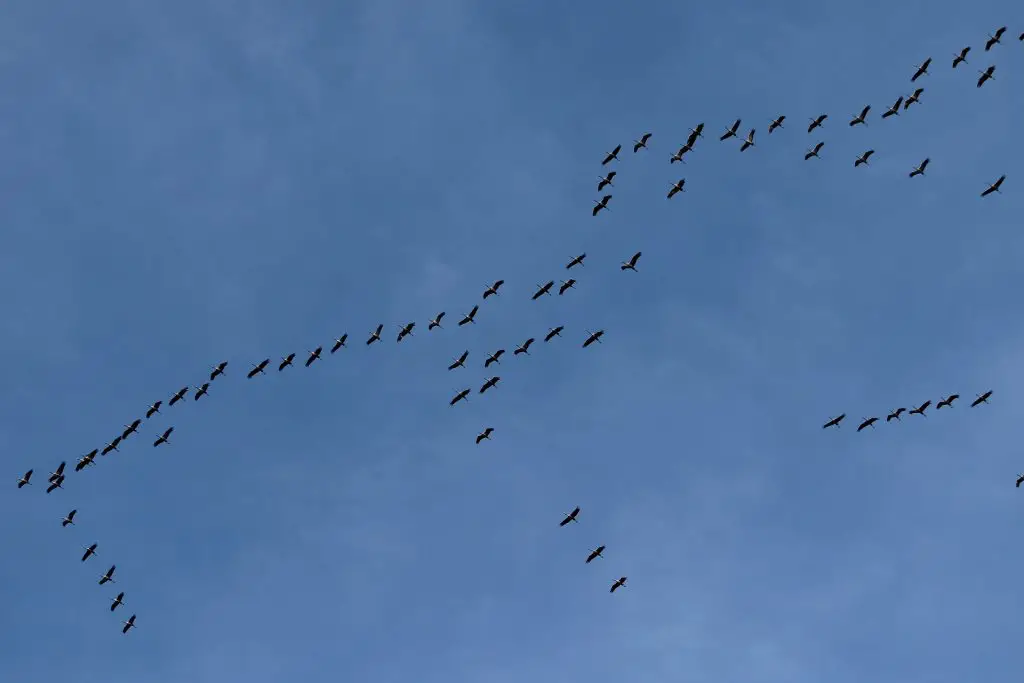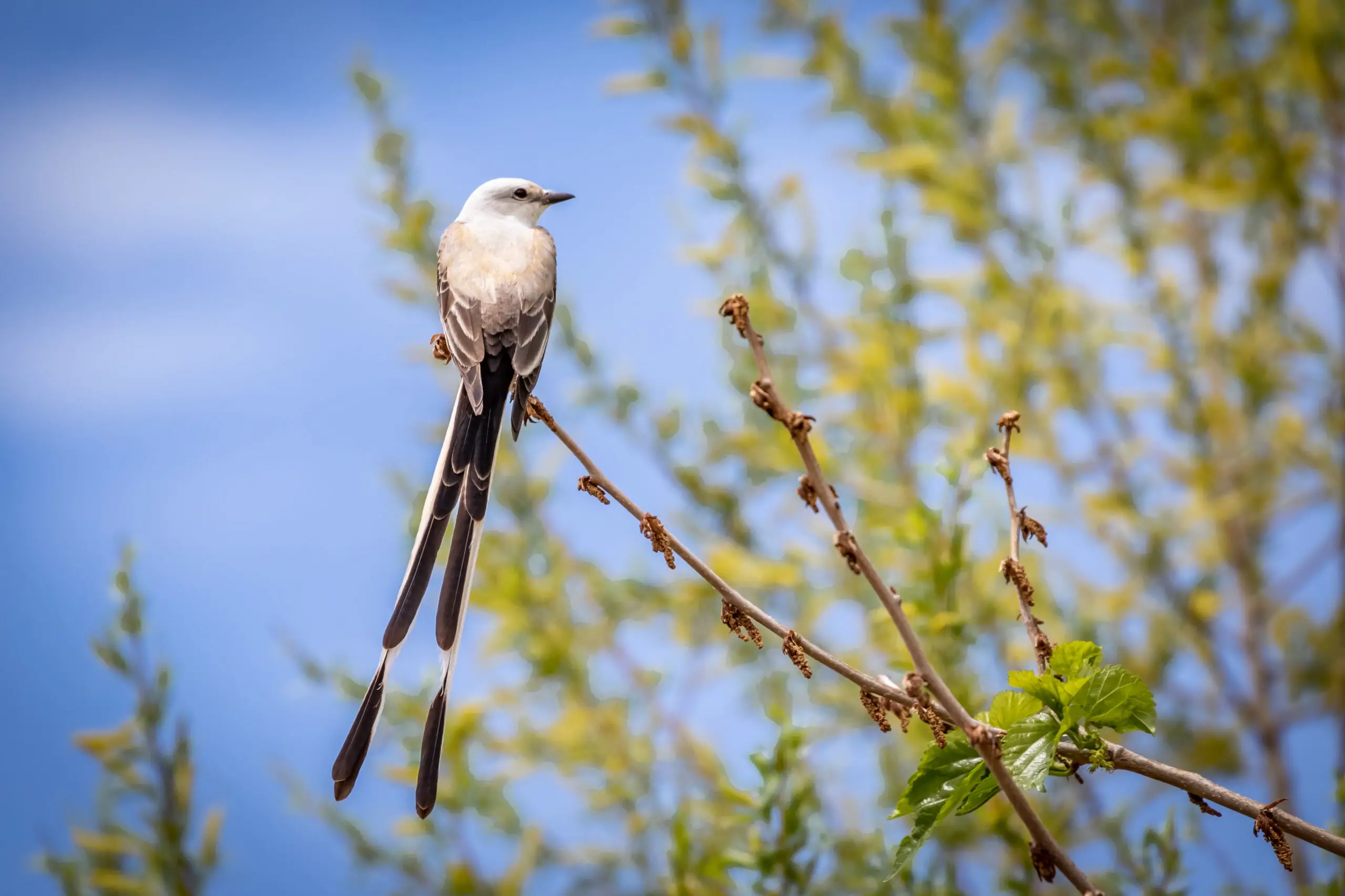Not just one of the most iconic opening lines in a song, birds do often appear as out of nowhere. They appear unexpectedly in places where they were not previously present, leading to questions about why this occurs.
This article will explore potential reasons behind birds suddenly appearing with a focus on both scientific and cultural explanations. The study of avian behavior is complex due to their wide variety of species. In order to gain insight into why birds suddenly appear, it is necessary to consider multiple factors such as environmental conditions, migration patterns, and available resources.
Additionally, various interpretations from different cultures can be taken into consideration when attempting to understand the meaning behind these unexpected bird sightings.

Environmental Conditions
Environmental conditions have been identified as one factor contributing to this occurrence. Habitat loss due to human development can force certain species from their original home range. Climate change, too, can be devastating for some avian populations; rising temperatures or extreme weather events may alter migration patterns or push them into unfamiliar areas where food sources are more abundant.
In addition, changes in environmental conditions can cause different bird species to mix together outside the typical breeding season, creating a unique opportunity for inter-species interaction rarely seen before.
Migration Patterns
Birds are known to migrate over long distances in order to survive. Migration is an important form of mimicry behavior, as birds seek out a more favorable environment and the resources they need for survival when conditions become unfavorable at their current location.
The social dynamics that influence bird migration patterns vary among species, but there are some commonalities:
- Seasonal Variations: Birds tend to fly south for the winter and return north during the warmer months. This encourages them to find new sources of food or breeding grounds where it may be easier to survive.
- Environmental Changes: When natural disasters like floods occur, birds can be forced to abandon their homes and relocate in search of better living conditions.
- Population Density: If a particular area becomes too crowded with other birds competing for resources, individuals may choose to move elsewhere in order maximize their chances of success.
Understanding these factors helps us gain insight into why birds suddenly appear in certain places throughout the year. It also provides clues about how best we can help protect migratory populations from harm caused by human activity or environmental change.
Available Resources
The notion that birds suddenly appear due to predator avoidance is a widely accepted theory. This hypothesis has been investigated and validated in numerous studies on bird behaviour, which have found that birds react quicker when they sense the presence of predators than when there are no threats present.
Moreover, research indicates that birds associate various environmental cues with the possibility of predation such as changes in vegetation structure or increased activity of other animals. Further, many species display distinctive physical behaviours like rapid flight or tail fanning when faced with potential danger.
As such, it can be concluded that birds do indeed seem to appear more quickly in response to perceived predators.
In addition to predator avoidance, another possible explanation for why birds suddenly appear could be related to nest building activities. Many species will spend considerable time searching for suitable nesting sites and materials prior to reproduction, often leading them into new areas where they may not normally venture.
Therefore, if a particular environment provides an ideal habitat for nesting then this could explain why so many birds might congregate at once.
Cultural Interpretations
The cultural interpretations of why birds suddenly appear vary from one society to another.
In some cultures, the answer may be rooted in an intercultural exchange that sees birds as a spiritual messenger or sign of good fortune.
For example, many Native American tribes look to birds as symbols of strength and power. The Lakota tribe believed that two spirit guides would come in the form of eagles and teach lessons about courage and faith.
Other cultures believe that when a bird appears, it is an invitation for humans to connect with nature and experience its healing powers.
In addition, the appearance of certain birds can also symbolize different meanings depending on their species and behavior.
For instance, crows are seen by some societies as harbingers of bad luck while doves have traditionally been associated with peace and hope due to their calming presence.
No matter what culture one belongs to, there is a common belief that when a bird suddenly appears, it carries a message which should be interpreted accordingly.
Therefore, understanding these various connections between people and birds helps us gain insight into our own relationship with nature and encourages greater appreciation for the natural world around us.
Symbolic Meanings
Humans have long pondered the mystery of why birds suddenly appear. Is it simply a matter of chance, or could there be something more?
It appears that to many people, these avian visitors may signify spiritual connections as well as scientific explanations.
From a spiritual perspective, some believe bird sightings can provide insight into our lives and serve as a reminder of the divine presence in all things. For example, when a particular species is seen at an important event or time in one’s life, they might interpret it as a sign from God or another higher power. Others attribute symbolic meanings to different kinds of birds based on their behavior and plumage patterns – such as crows being messengers of death while doves represent peace.
The other side of this discussion is rooted in science and ecology: changes in climates, seasons, and food sources are among the environmental cues which drive birds’ migration behaviors. Birds also often flock together for protection against predators or for socialization with others within their species.
While these theories don’t offer any supernatural meaning behind bird appearances, they do explain why certain species come around during specific times of year or events like storms. Ultimately, whether you ascribe deeper symbolism to them or not, birds will still continue to make surprise visits now and then – leaving us to ponder their sudden appearances anew each time.
Adaptability Of Birds
Birds are highly adaptable creatures. They demonstrate this through their cooperative behavior and breeding habits, which allow them to survive in diverse habitats across the globe. The ability of birds to quickly adjust their behaviors and migratory patterns is one of the primary reasons for their success as a species.
For example, many species have adapted to living in urban areas by utilizing man-made structures like bridges, building facades, and telephone poles as perches or nesting sites. Some bird species also take advantage of human activities such as farming or fishing—using food scraps discarded by humans to supplement their natural diets.
Birds’ remarkable adaptability has enabled them to spread around the world more successfully than any other group of animals with wings.
The secret behind birds’ successful adaptation lies within their impressive evolutionary history that spans millions of years; it has equipped them with an array of traits and skills that enable them to live in almost any environment on Earth.
For instance, some birds can fly thousands of miles without taking a break while others dive deep into water bodies searching for prey with extraordinary accuracy and speed. These are just two examples among countless others illustrating how well suited birds are for survival in our ever-changing world.

Conclusion
Migratory birds have long been an incredible source of fascination for birdwatchers, scientists and the general public. They are a symbol of strength and adaptability due to their ability to traverse vast distances in search of resources.
Migration patterns can be determined by environmental conditions or availability of food sources, while cultural interpretations often provide further insight into why these creatures appear when they do.
A recent study estimated that over 10 million individual birds migrate through Europe each year, providing a stunning visual representation of just how far some species will travel on their journeys.
Although there may not be one single answer as to why birds suddenly appear, understanding their behavior can help us appreciate them even more.

